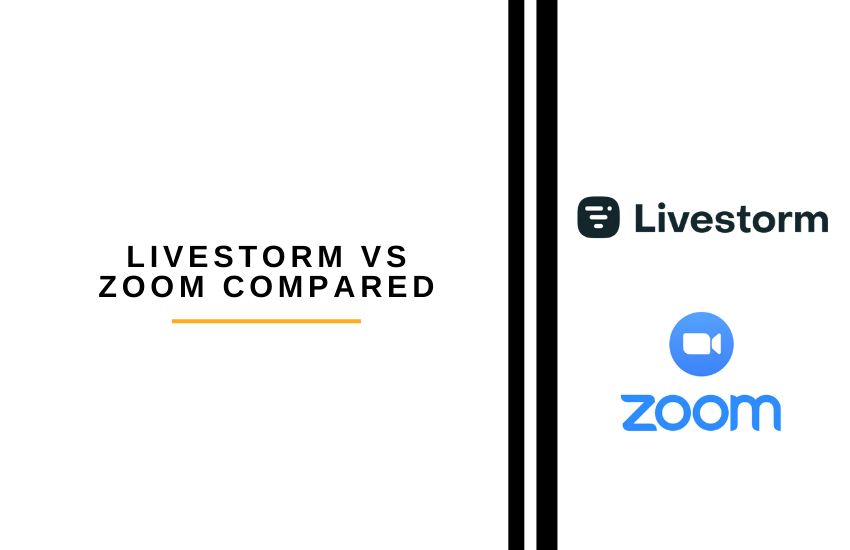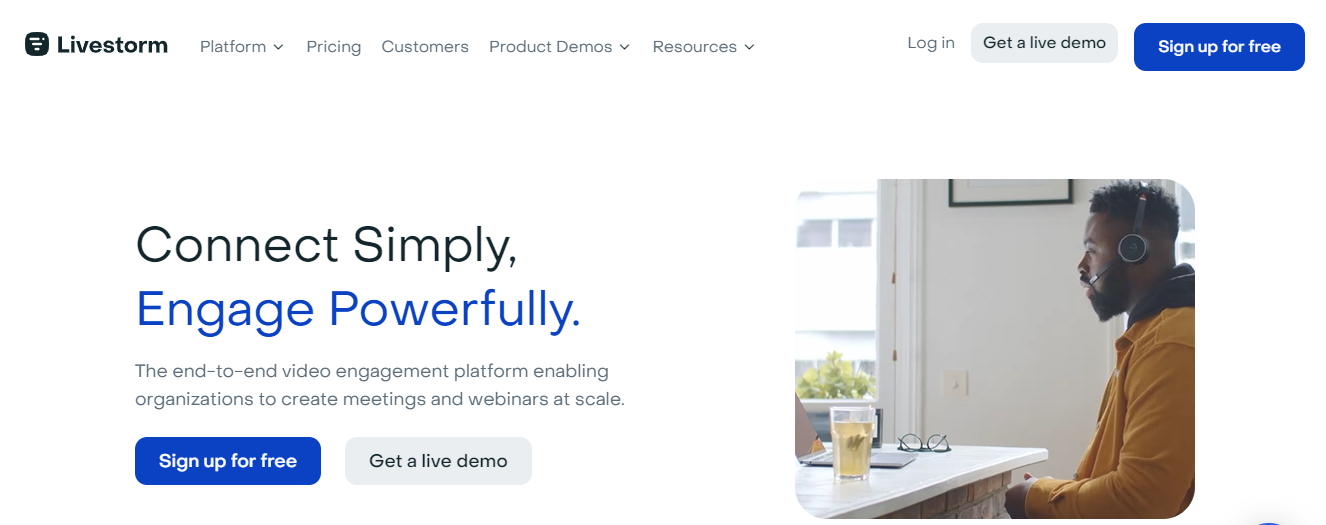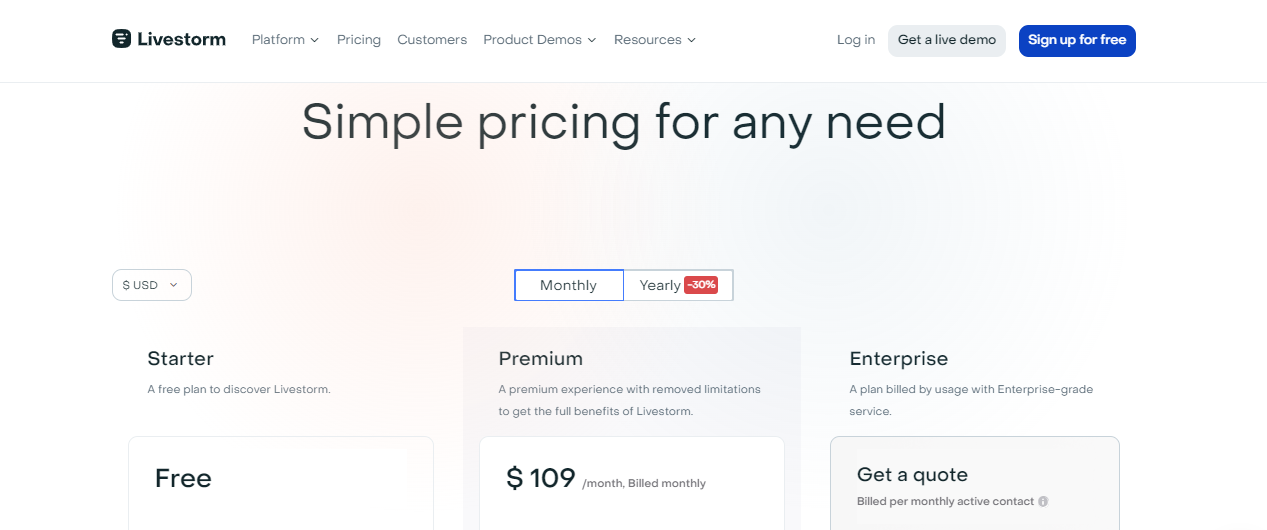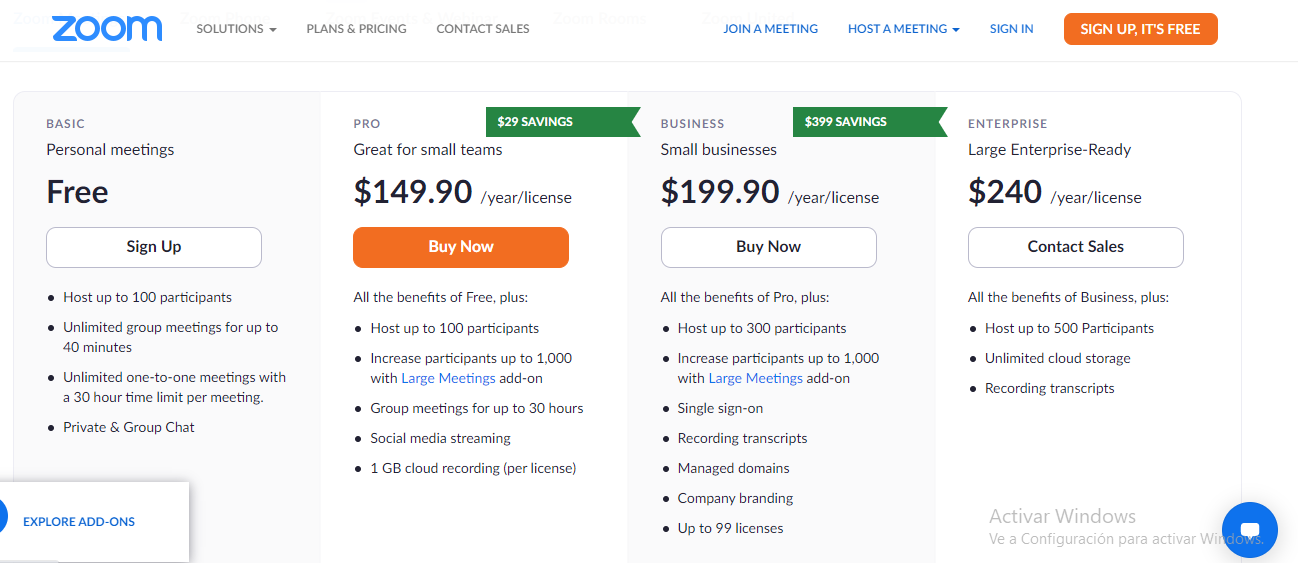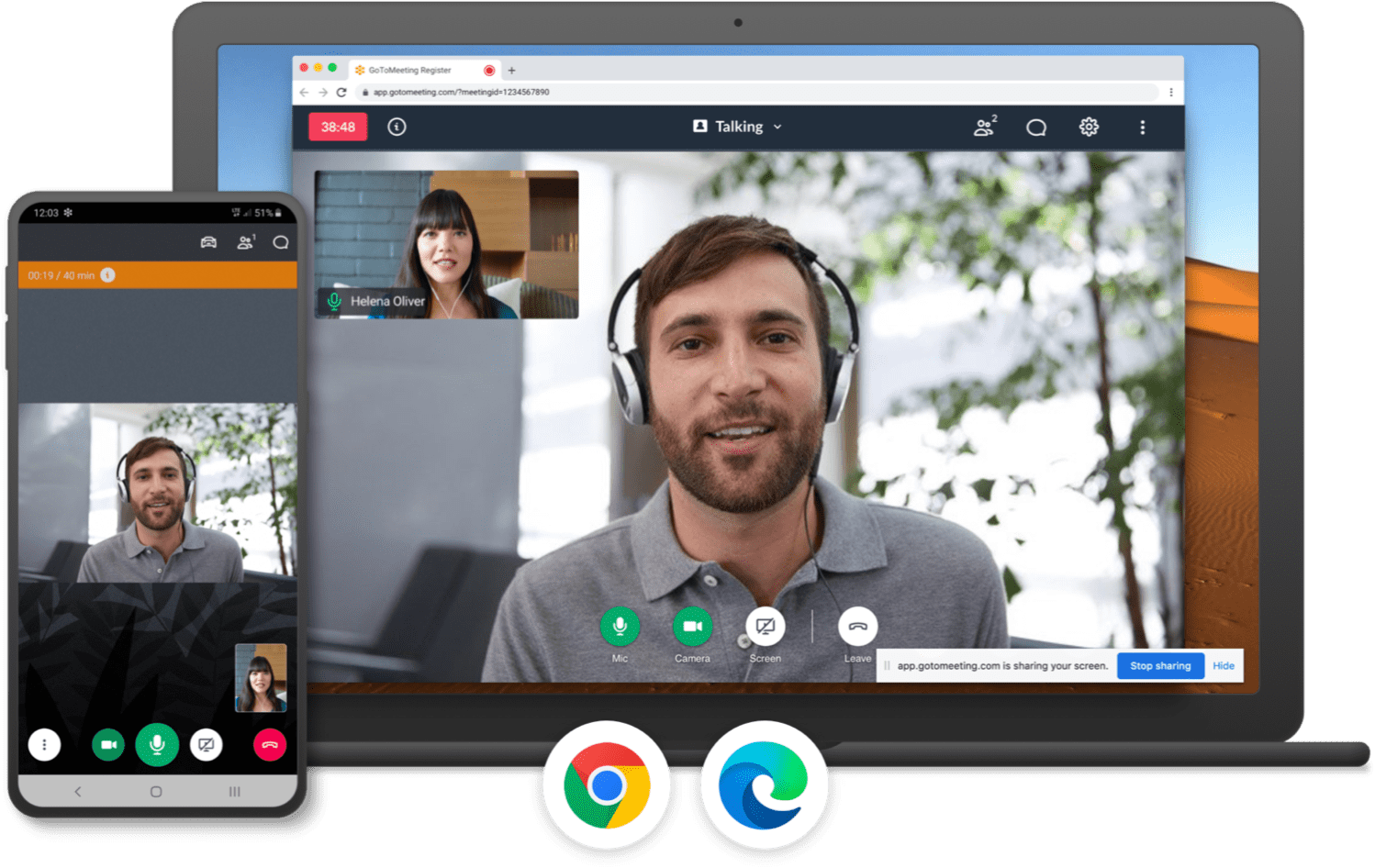Last Updated on December 4, 2023 by Ewen Finser
Webinar platforms and video conferencing solutions are invaluable tools in the modern business world. From mitigating business commuting costs to helping companies keep talent, the need for easy-to-use, multi-platform solutions has never been greater.
As per research sponsored by Lifesize, 69% of business professionals think that video communication will be as crucial to their work as voice assistants. Moreover, 47% of business professionals believe that video conferencing reduces the need for business travel.
Among the many solutions on the market, two popular video conferencing solutions stand out; Livestorm vs Zoom. Both companies offer similar services, but they do have some key differences.
In this article, we’ll take a closer look at Livestorm vs Zoom. We’ll discuss how they differ in features, pricing, and pros and cons.
Bottom Line Up Front
The main difference between Livestorm vs Zoom is that Livestorm is more of a marketing tool, whereas Zoom is primarily a video conferencing solution. Moreover, Livestorm is a browser-based solution, whereas Zoom comes with a desktop and mobile application.
Main Differences Between Livestorm vs Zoom
The main differences between Livestorm vs Zoom are:
- Livestorm is browser-based, whereas Zoom is an app for desktop and Android applications.
- Livestorm lacks screen sharing features on mobile devices, whereas Zoom allows for desktop and mobile screen sharing.
- Livestorm has automated webinars that help attract leads, whereas Zoom offers on-demand webinars.
- Zoom has low latency rates and high frame rates, whereas Livestorm has higher latency rates and minimal frame rates.
- Livestorm has extensive marketing automation capabilities, whereas Zoom lacks these marketing tools.
Livestorm Overview
Livestorm is a browser-based software that lets you schedule and host live online events, webinars, and meetings. It doesn’t require the installation of any software. Businesses can use Livestorm for pre-recorded or live events and corporate and marketing purposes.
Things that make Livestorm different are its ease of use and focus on professional digital marketing and lead generation. The tool boasts numerous built-in features that help you to generate sales-ready leads, including automation tools and pre-developed templates.
You can automatically share presentations, roll credits at the end of an event, and even set up polls. Livestorm’s interface allows users to customize a calendar for scheduling events and sending reminder emails to attendees. Moreover, the tool has analytical features that help gauge the performance of events and measure ROI.
The host can upload documents and presentations, allowing attendees to access them before the meeting. Livestorm also integrates with third-party apps and tools that help add more functionality to your events. Tools such as Slack, Zapier, Google Analytics, and HubSpot work with Livestorm to make your webinars even more powerful.
Livestorm Pricing
Livestorm has three pricing plans. The Livestorm basic is a free plan that lets you publish as many events as you want to host up to 20-minute events, each with ten registrants and ten attendees. The basic plans also allow users to have one instant meeting room.
The Livestorm premium plan allows you to host up to 4-hour events, each with 1000 attendees. It also allows users to add additional hosts with unlimited registrants and create instant meeting rooms. Users can create up to 12 participants for each instant meeting. Users will pay $99/month for 250 attendees and up to $209/month for up to 1000 attendees.
The Livestorm enterprise plan gives users a dedicated CSM, priority support, and the ability to host up to 3000 attendees. The plan also comes with premium training from an expert alongside multiple workspaces with a unified billing. Contact the sales team for a custom quote for this plan.
Livestorm Pros
- Allows for email automation before and after meetings
- Ability to duplicate existing webinar
- Analytics feature gives insight into your webinar performance
- Allows for the use of 3rd party apps and integrations
- It comes with screen share features
- Easy to use
- The customer support is great
- Doesn’t require software installation
Livestorm Cons
- The browser tool is not optimized extensively
- Screen sharing is not as intuitive as other screen sharing tools
Zoom Overview
Zoom is a cloud-based online video conferencing platform. Zoom offers HD video conferencing, online meetings, webinars and chat functions, screen sharing, and virtual backgrounds. The camera and audio control features are easy to use and provide users with a high-quality experience.
Zoom also provides unlimited chat time for all its paid accounts while allowing for portrait and gallery views on its screens. This feature allows you to add your own personal touch to the meeting experience, switch between views, and share content.
You can use Zoom on desktops, mobile devices, and video conferencing systems. The tool offers point-to-point connections to help you optimize your video conferencing experience. You can even mirror your video and touch up your appearance with Zoom’s built-in video functions.
The Zoom App marketplace makes it possible to expand Zoom’s features even further. It offers a wide selection of plug-ins and integrations such as Google Workplace, Epic, Rippling, and HubSpot, among other options.
Zoom Pricing
Zoom has four pricing plans. The free plan allows users to host up to 100 participants with group meetings for up to 40 minutes. The plan also allows users to host one-to-one meetings each thirty minutes apart.
- Pro plan: $149.90/Year/License
- Small business: $199.90/Year/License
- Large enterprise-ready: $240/Year/License
Visit the Zoom pricing page for a detailed pricing breakdown.
Zoom Pros
- Allows streaming via Facebook
- Highly scalable for small, medium, and large businesses
- It’s easy to use
- High-quality video and audio output
- Doesn’t contain ads even for the free plan
- Ability to add virtual backgrounds
Zoom Cons
- You have to download the Zoom app to be able to use it
- Some users have experienced a delay in connection time when using the tool
- Security issues such as Zoom bombing
Livestorm vs Zoom: Feature Comparison
1. Video Conferencing
Video conferencing is the heart and soul of any webinar or online meeting. Both tools have video conferencing as their core feature.
Livestorm guarantees a seamless, high-quality video conferencing experience. It provides HD video with unlimited screens and seamless audio without any interruption. However, this depends on your bandwidth, internet speed, and how many attendees you have.
Zoom offers a full suite of video conferencing services. This includes group video conferencing with its contact center solution, one-to-one video conferencing with screen sharing capabilities, and Facebook Live streaming.
Besides HD video conferencing, Zoom also features a high-quality audio output with noise-canceling technology. Zoom has the highest frame rates and lowest latency rates among the video conferencing tools we’ve tested before. This makes it a great tool for both webinars and online meetings.
Verdict: Zoom stands out as a more comprehensive video conferencing platform with better functionality and quality of sound and video.
2. Live Chat
Live chat is a great way to engage attendees and promote interaction. Both Livestorm and Zoom have live chat features as part of their core offerings.
Livestorm’s live chat has cross-platform capabilities, an intuitive interface for ease of use, and real-time analytics to track data generated by the chat feature. Users can send public or private chats to attendees and increase engagement.
The chat function on Livestorm also comes with a sidebar that lets you know who is online and offline. The host can also disable chat functions to ensure no interference whatsoever.
Zoom has a comprehensive live chat feature that allows for more personalized engagements. You can send private messages, start group chats, and set up custom automated chat functions to increase engagement. Users can preview the chats they send and receive notifications for new chats.
Verdict: It’s a tie! Both tools have live chat features that are reliable and easy to use.
3. Mobile Friendliness
As of 2021, the number of mobile phone users globally was 15 billion. This metric illustrates that a mobile device usage is a prominent form of user engagement. You can’t afford to ignore it.
Livestorm features a responsive mobile interface that you can use on Android and iOS. The video format and quality automatically adapt to the mobile browser through WebRTC, a leading video technology for compatible browsers. However, since Livestorm is browser-based, performance is dependent on internet connectivity.
On the other hand, Zoom has a dedicated mobile app for Android and iOS. The apps allow for a seamless broadcasting, recording, and screen-sharing experience like you would expect from a desktop app. There is less lag time by using the app, and the video quality is not affected by bandwidth issues.
Normally, video conferencing apps for mobile devices come with limited functionality. But Zoom has a rich feature set for both Android and iOS users.
Verdict: Zoom’s features and the special app give it an edge over Livestorm regarding compatibility and performance on mobile devices.
4. Reports and Analytics
Reporting and analytics are essential for post-event documentation and maximizing your webinar’s return on investment. Livestorm offers a suite of reporting features that allow you to track engagement data, see which participants connected at what time, analyze the performance of your live chat function, and know who visited the pages you promoted in your event URL.
Zoom comes with a reporting interface that gives you a real-time overview of key metrics and engagement data. You can track live views, unique video views, screen shares, the total length of all sessions, and all other available metrics across your account. The pre and post-webinar analytics also provide further insight into the success of your event.
Verdict: Zoom is far more comprehensive with its reporting and analytics suite.
5. Integration and Third-Party Platforms
Both Livestorm and Zoom have APIs to integrate with third-party solutions. You can add a video chat widget on your website or blog, send invitations through social media, and connect using other tools you use regularly. It’s all possible because of these integrations.
Livestorm integrations include Google Analytics, MailChimp, Zapier, YouTube live, SalesMate, Zenkit, TypeForm, Salesforce, among others. This allows you to use your live chat software for other features on your website or integrate it with the third-party tools you use daily. You can also connect Livestorm with Zapier if, for example, you need to share an attendee’s data immediately after they register.
Zoom has numerous integrations that allow easy connections to third-party tools and platforms. For a quick live chat feature, you can connect with websites like Facebook, YouTube, HubSpot, Gmail, Zendesk, or any other platform. It also connects with a wide variety of CRMs and marketing automation solutions.
Verdict: It’s a tie! Both platforms feature a large list of integrations that let you use your software beyond webinar interactions.
6. Screen Sharing
Screen sharing is an important component of online events where participants need to get the big picture. It’s also useful for non-webinar events like seminars, hackathons, webinars, and more. Both Livestorm and Zoom offer screen sharing with their video conferencing solutions.
Screen sharing with Livestorm is easy. All users have to do is click the screen share button and start sharing. It’s a great way to share information without resorting to other tools or applications quickly. However, the screen share feature is not available on mobile devices.
Zoom’s screen share feature also lets you share your desktop, whether it’s Mac or PC. But unlike Livestorm, the latter allows for remote control sharing as well. This feature is useful because Zoom permits conference hosts to guide participants through a process without leaving the virtual room.
Verdict: Zoom has a more intuitive screen-sharing feature on mobile devices and PCs.
7. Automated Webinars
Automated webinars are useful tools for marketers who want to automate webinars without limiting participants’ capabilities.
Livestorm’s automated webinar features allow you to generate leads, shorten your sales cycle, and streamline the lead nurturing process. For example, you can create great events at scale and engage audiences automatically. There’s also the ability to tailor your webinars so they can fit your marketing goals.
Zoom doesn’t offer automated webinars; however, it has on-demand webinar options. The tool enables you to schedule a webinar, record it automatically in the cloud or locally, and distribute it to the people you want. Anybody who has access to the registered link can watch the webinar.
Verdict: Livestorm has extensive marketing functionalities with automated webinars than Zoom.
Other Video Conferencing Solutions to Consider
If neither Livestorm nor Zoom meets your needs, consider these alternatives.
- RingCentral MVP
- GlobalMeet collaboration
- Microsoft Teams
- GoTo Meeting
- Fuze
- Google WorkSpace
FAQs
Question: Is Livestorm better than Zoom?
Answer: Livestorm is not better than Zoom. Both platforms offer video conferencing and live chat capabilities. However, Zoom features more integrations, an extensive list of third-party apps you can connect with, and offers screen sharing. It also has a more intuitive screen-sharing feature on mobile devices and PCs.
Question: Does Zoom offer automated webinars?
Answer: Zoom doesn’t offer automated webinars. However, it has on-demand webinar options that you can schedule and tailor to your marketing goals. Anybody who has access to the registered link can watch the webinar after publishing it.
Question: Do Zoom webinars show your face?
Answer: Zoom webinars don’t show your face. It’s a view-only platform, which means that the host can’t see the attendees, and neither can the attendees see the host. As such, you can use Zoom webinars for cold outreach or broadcasting your message at scale.
Question: Can I use Livestorm on mobile?
Answer: You can use Livestorm on mobile devices. However, the connection is browser-based, which means you access the meetings through a browser. Unfortunately, you can’t use your phone for screen sharing.
Conclusion
The Livestorm vs Zoom debate is a tough call. They’re both popular platforms with their own sets of features and functionalities. Livestorm has comprehensive marketing capabilities, but Zoom has a more intuitive screen-sharing feature on mobile devices and PCs.
From the in-depth research, I recommend Zoom for its feature-rich screen share, collaboration capabilities, and integration options. It has low latency rates and high frame rates, making it a great option for small businesses and large enterprises.

